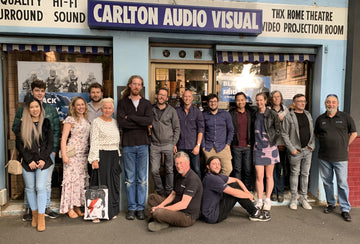Micheal Kanellos of CNET was visiting Makuhari in Japan this week and has written about the prototype ultra high def display that Sharp were exhibiting.
"Anyway you look at it, 8.84 million pixels is a lot of points of light."
Sharp has produced a 64-inch LCD monitor that provides screen resolution four times that of normal high-definition screens. Normal HD screens have 2 million pixel points. The new Sharp monitor, which is on display at the Ceatec technology trade show this week, sports 4,096-by-2,160 pixel-line resolution--double the number of vertical and horizontal pixel lines offered by a normal HD screen. This comes out to nearly 9 million pixel points.
"Small details, like plumes of smoke over an aerial shot of a rural village, can be picked out. The monitor can also be divided into quarters and display four high-definition videos at once."
The screen, still in the development phase, will be targeted at film and television producers as well as medical researchers, a Sharp representative said. The exhibit is one of the more popular at the weeklong trade show taking place outside Tokyo. But eventually, these technologies will trickle down to the consumer market. Oh to have real time Google earth displays in such a resolution....the voyeurism...
The company is using the show to emphasize its leading role in the screen world. In August, Sharp formally began producing LCD panels out of its second Kameyama plant. The plant processes eighth-generation glass sheets, which measure just over 7 feet by 8 feet. Six 52-inch LCDs can be popped out of a single sheet. The smaller glass sheets processed in sixth- and seventh-generation plants can only produce two and three 52-inch panels, respectively, out of a single piece of glass.
Other prototypes being shown include the screen with a technology Sharp calls Mega Contrast. Rab first saw this at the Las Vegas CES show in January where an LCD screen was demonstrated with a 1 million-to-1 contrast ratio in a device that will be orientated towards replacing the CRT monitors currently used in video studios and production houses. (Typical HD LCD screens sport a 1,200-to-1 contrast ratio).
Opinions





